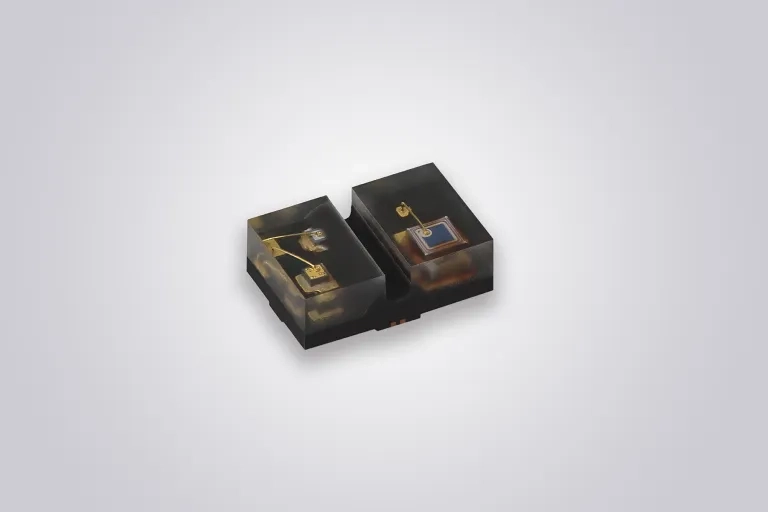
The Optoelectronics group of Vishay Intertechnology, Inc. has developed a new reflective optical sensor with several performance improvements, including a higher current transfer ratio (CTR), increased sensing distance and lower power consumption, while saving space compared to previous-generation solutions. Targeting industrial, computer, consumer and mobility applications, the Vishay Semiconductors VCNT2030 features a vertical-cavity surface-emitting laser (VCSEL) and a silicon phototransistor in a miniature 1.85 × 1.2 × 0.6 mm surface-mount package, saving more than 40% PCB space compared to previous-generation devices.
Key features include a detection range of 0.3 mm to 6 mm, an emitter wavelength of 940 nm and a typical output current of 2.5 mA, which results in a typical CTR of 31% under test conditions. The CTR is >100% higher than previous-generation devices and the closest competing sensor, according to Vishay.
In addition, the optical sensor is reported to offer excellent internal crosstalk suppression due to the VCSEL’s narrow ±17° emission angle, which also enables improved proximity performance behind cover glass, and a sensing distance of 15 mm, which is three times higher than the closest competing devices.
The analog output signal at the phototransistor is dependent on the amount of light emitted by the VCSEL and reflected off an object in the sensor’s field of view, Vishay said. The device offers a sensing distance of 15 mm, which is three times higher than the closest competing device on the market, according to the company.
Applications include optical switching in industrial infrastructure, home and building controls, notebook and desktop computers, home appliances, consumer electronics and metering applications. The sensor also can be used in optical encoding for motor control in e-bikes, golf carts, tractors and harvesters as well as paper presence detection in printers and scanners. “In these applications the low 8-mA driving current of the device’s VCSEL is enough to achieve the same performance as solutions using 20-mA infrared emitters, dramatically lowering power consumption,” Vishay said.
The optical sensor is RoHS-compliant, halogen-free and Vishay Green. Samples and production quantities are available now, with lead times of eight to 16 weeks.



